Terror Management Theory (TMT) offers a profound framework for understanding the human psyche’s response to existential threats and mortality awareness. This paper explores how TMT illuminates the mechanisms of trauma creation and provides insights into therapeutic healing processes. By examining the interplay between death anxiety, cultural worldviews, and self-esteem, we can better understand how traumatic experiences shatter our psychological defenses and how therapeutic interventions can rebuild them. This comprehensive analysis bridges existential psychology with trauma therapy, offering clinicians valuable perspectives on addressing the deepest human fears that underlie psychological suffering.
Human beings are uniquely burdened with the awareness of their own mortality. This consciousness of death, while enabling complex thought and culture, creates a fundamental psychological conflict that shapes much of human behavior and mental health. Terror Management Theory (TMT), which was formally introduced in the cited 1986 paper by Greenberg, Pyszczynski, and Solomon, provides a framework for understanding how humans manage the terror associated with this awareness and how the breakdown of these management systems contributes to psychological trauma.
The theory posits that humans have developed sophisticated psychological mechanisms to buffer against the anxiety that arises from the awareness of our inevitable death. These buffers include cultural worldviews that provide meaning and order, self-esteem that confirms our value within these worldviews, and close relationships that offer symbolic immortality. When trauma occurs, it often represents a catastrophic failure of these terror management systems, leaving individuals psychologically vulnerable and existentially exposed.
Theoretical Foundations of Terror Management Theory
The Dual-Process Model
TMT operates on a dual-process model of defense against death anxiety. The first level consists of proximal defenses, which are activated when thoughts of death are conscious and involve rational suppression and distraction from mortality concerns. The second level comprises distal defenses, which operate outside of conscious awareness and involve bolstering self-esteem and faith in one’s cultural worldview. Understanding these dual processes is crucial for comprehending how trauma disrupts normal terror management functions.
Cultural Worldviews as Anxiety Buffers
Cultural worldviews serve as shared symbolic conceptions of reality that imbue life with order, meaning, and the promise of literal or symbolic immortality. These worldviews provide standards of value that, when met, confer self-esteem and a sense of personal significance that transcends biological mortality. Trauma often shatters these worldviews, leaving individuals without the cognitive frameworks necessary to make sense of their experiences and maintain psychological equilibrium.
Self-Esteem as Personal Worth
Within TMT, self-esteem functions as a feeling of personal worth obtained by believing one is a valuable contributor to a meaningful universe. This sense of value provides a buffer against existential anxiety by affirming that one’s life has significance beyond mere biological existence. Traumatic experiences frequently devastate self-esteem by challenging fundamental assumptions about one’s worth, competence, and place in the world.
The Creation of Trauma Through a TMT Lens
Mortality Salience and Traumatic Exposure
Traumatic events often involve direct confrontation with death or the threat of annihilation, creating what TMT researchers call mortality salience. This acute awareness of mortality overwhelms the psychological defenses that typically keep death anxiety at bay. Unlike the controlled mortality salience manipulations used in research settings, real-world trauma involves prolonged, intense, and often repeated exposure to death-related threats that can permanently alter one’s relationship with mortality.
Worldview Threat and Meaning Collapse
Trauma frequently involves experiences that violate fundamental assumptions about how the world operates. Acts of violence, betrayal, or random catastrophe can shatter the illusion of a just, predictable, and meaningful universe. This worldview threat removes the protective function of cultural belief systems, leaving individuals vulnerable to raw existential anxiety. The resulting state of meaninglessness can manifest as dissociation, numbness, or a pervasive sense of unreality that characterizes many trauma responses.
Attachment Disruption and Interpersonal Trauma
TMT recognizes that close relationships serve a terror management function by providing a sense of connection that transcends individual mortality. Interpersonal trauma, particularly when perpetrated by attachment figures, disrupts this crucial buffer against death anxiety. The betrayal of trust inherent in such trauma not only damages specific relationships but can fundamentally alter one’s capacity to use interpersonal connections as sources of existential comfort.
The Embodied Nature of Trauma
From a TMT perspective, trauma is not merely a psychological phenomenon but an embodied experience that reminds us of our physical vulnerability and mortality. The body, which trauma often targets or threatens, becomes a source of terror rather than a vehicle for engaging with life. This embodied mortality salience can persist long after the initial traumatic event, manifesting as hypervigilance, somatic symptoms, and a chronic sense of physical vulnerability.
TMT-Informed Understanding of Trauma Symptoms
Hypervigilance as Death Anxiety
The hypervigilance characteristic of post-traumatic stress can be understood as a heightened sensitivity to mortality threats. Having experienced a breakdown in terror management defenses, trauma survivors remain acutely attuned to potential dangers, unable to rely on the normal buffering mechanisms that allow others to function without constant death awareness.
Avoidance as Proximal Defense
Avoidance behaviors in trauma survivors can be conceptualized as extreme proximal defenses against mortality salience. By avoiding reminders of the traumatic event, individuals attempt to suppress conscious awareness of their vulnerability and mortality. However, this avoidance prevents the integration necessary for rebuilding functional terror management systems.
Intrusive Memories as Failed Suppression
Intrusive memories and flashbacks represent the failure of proximal defenses to keep mortality salience out of conscious awareness. These symptoms suggest that the traumatic confrontation with death was so overwhelming that normal suppression mechanisms cannot contain it, leading to repeated, involuntary re-experiencing of existential threat.
Emotional Numbing as Defensive Shutdown
The emotional numbing often seen in trauma survivors can be understood as a protective shutdown of the entire terror management system. When cultural worldviews and self-esteem buffers have failed catastrophically, emotional disengagement may serve as a last-resort defense against overwhelming existential anxiety.
Healing Trauma Through Terror Management Theory
Rebuilding Cultural Worldviews
Therapeutic healing from a TMT perspective involves reconstructing meaningful worldviews that can accommodate the reality of the traumatic experience while still providing existential comfort. This process requires acknowledging the fragility of human existence while finding new sources of meaning and value. Narrative therapy approaches that help individuals construct coherent stories about their experiences align well with this TMT-informed understanding of healing.
Restoring Self-Esteem and Personal Significance
Recovery involves rebuilding self-esteem not through denial of vulnerability but through recognition of one’s courage in surviving and continuing to engage with life despite awareness of mortality. Therapeutic interventions should focus on helping individuals identify ways they contribute value to their communities and create lasting legacies, thereby achieving symbolic immortality despite their confrontation with death.
Developing Death Acceptance
While TMT traditionally focuses on death anxiety and its management, recent developments in the theory recognize the therapeutic value of death acceptance. For trauma survivors who have had their mortality salience dramatically increased, learning to accept death as a natural part of life while still finding meaning and purpose can be profoundly healing. This involves moving from death anxiety to what some researchers call “neutral death acceptance.”
Creating Therapeutic Communities
Group therapy and therapeutic communities can serve crucial terror management functions for trauma survivors. By creating spaces where individuals can share their experiences of vulnerability and mortality while receiving validation and support, these interventions rebuild the interpersonal buffers that trauma destroys. The universality of death anxiety can paradoxically become a source of connection and meaning.
Integrating Body-Based Interventions
Given the embodied nature of trauma and its impact on mortality salience, body-based therapeutic interventions are crucial from a TMT perspective. Somatic therapies that help individuals reclaim their bodies as sources of vitality rather than vulnerability can restore the capacity for embodied engagement with life. These approaches help transform the body from a reminder of mortality to a vehicle for meaningful existence.
Clinical Applications and Therapeutic Techniques
Existential Psychotherapy Integration
TMT provides a robust theoretical foundation for existential psychotherapy approaches to trauma treatment. By explicitly addressing themes of death, meaning, freedom, and isolation, therapists can help clients reconstruct terror management systems that acknowledge existential realities while still providing psychological protection. This involves helping clients find authentic ways to live with awareness of mortality rather than in denial of it.
Meaning-Making Interventions
Therapeutic techniques that facilitate meaning-making are particularly important from a TMT perspective. These might include writing exercises that help individuals construct redemptive narratives about their experiences, values clarification work that identifies sources of significance beyond the self, or creative expression that allows for symbolic immortality through artistic creation.
Mindfulness and Mortality Awareness
Mindfulness-based interventions can help trauma survivors develop a different relationship with mortality salience. Rather than being overwhelmed by death awareness or rigidly defending against it, mindfulness practices can facilitate a state of present-moment awareness that acknowledges impermanence while remaining engaged with life. This represents a mature form of terror management that integrates rather than denies existential realities.
Cultural and Spiritual Exploration
For many trauma survivors, healing involves exploring or reconnecting with cultural and spiritual traditions that provide frameworks for understanding suffering and mortality. From a TMT perspective, these explorations are not merely adjuncts to therapy but central to rebuilding the worldview structures necessary for psychological well-being. Therapists should be prepared to engage with clients’ cultural and spiritual meaning-making processes.
Case Examples and Clinical Vignettes
Combat Veterans and Shattered Worldviews
Consider the case of combat veterans who return from war with their fundamental assumptions about humanity and civilization shattered. The random nature of combat deaths, the capacity for human cruelty, and the thin line between civilization and chaos all serve to destroy the worldview buffers that typically protect against death anxiety. Treatment must acknowledge this worldview collapse and work to construct new frameworks for meaning that can accommodate the realities witnessed in war while still providing reasons for living.
Childhood Abuse and Attachment-Based Terror Management
Survivors of childhood abuse face unique challenges from a TMT perspective. The very relationships that should provide terror management functions instead become sources of threat. These individuals must reconstruct not only their worldviews and self-esteem but also their fundamental capacity for interpersonal terror management. Therapy must provide a secure base from which to explore these existential vulnerabilities while gradually building the capacity for trust and connection.
Medical Trauma and Embodied Mortality Salience
Individuals who have experienced severe medical trauma, such as cancer diagnosis or life-threatening injury, face ongoing reminders of their mortality through their bodies. Unlike single-incident traumas that can be processed and integrated, medical trauma often involves ongoing threat and uncertainty. TMT-informed treatment must help these individuals find ways to live meaningfully with heightened awareness of bodily vulnerability and mortality.
Research Implications and Future Directions
Empirical Testing of TMT-Based Interventions
While TMT has generated extensive research on death anxiety and its effects, there is a need for more empirical testing of TMT-based therapeutic interventions for trauma. Future research should examine whether interventions explicitly targeting terror management processes show superior outcomes compared to standard trauma treatments. This might include randomized controlled trials comparing TMT-informed therapy to other evidence-based approaches.
Cultural Variations in Terror Management and Trauma
Different cultures provide different terror management resources, and trauma may impact these resources differently across cultural contexts. Research is needed on how cultural worldviews influence both the development and treatment of trauma from a TMT perspective. This includes examining how collectivist versus individualist cultures provide different buffers against existential anxiety and how these differences should inform culturally sensitive trauma treatment.
Neurobiological Correlates of Terror Management
Emerging neuroscience research has begun to identify brain regions and networks involved in processing mortality salience and managing death anxiety. Understanding the neurobiological substrates of terror management could inform the development of integrated treatments that address both the psychological and biological aspects of trauma. This might include examining how trauma alters neural terror management systems and how various interventions affect these systems.
Post-Traumatic Growth and Terror Management
The phenomenon of post-traumatic growth, where individuals report positive psychological changes following trauma, requires further exploration from a TMT perspective. How do some individuals reconstruct terror management systems that are not only functional but actually enhanced following traumatic confrontation with mortality? Understanding these processes could inform strengths-based approaches to trauma treatment.
Implications for Therapist Training and Self-Care
Therapist Mortality Salience
Working with trauma inevitably exposes therapists to mortality salience through vicarious traumatization. TMT suggests that therapists need robust terror management systems of their own to effectively work with traumatized clients. Training programs should explicitly address existential themes and help therapists develop personal resources for managing death anxiety.
The Therapeutic Relationship as Terror Management
The therapeutic relationship itself serves terror management functions for both client and therapist. By creating meaning through healing work and establishing deep human connections in the face of suffering, the therapeutic process provides symbolic immortality for practitioners. Understanding this dynamic can help therapists maintain sustainable practices while avoiding burnout.
Supervision and Professional Development
Clinical supervision from a TMT perspective should address not only technical skills but also the existential challenges of trauma work. Supervisors should help supervisees process their own mortality salience and maintain functional worldviews while remaining open to clients’ existential struggles. Professional development should include ongoing exploration of meaning, values, and sources of significance in clinical work.
Limitations and Critiques
Cultural Universality Questions
While TMT claims to identify universal human processes, critics argue that its emphasis on death anxiety may be culturally specific to Western, individualistic societies. Some cultures may have fundamentally different relationships with death that don’t fit the anxiety-buffer model. Clinicians should be aware of these potential limitations when applying TMT concepts across diverse populations.
Reductionism Concerns
Some critics argue that TMT reduces complex human psychology to a single motivational principle – the management of death anxiety. While death anxiety is undoubtedly important, trauma involves multiple factors that may not all be reducible to terror management failures. A comprehensive approach to trauma treatment should integrate TMT insights with other theoretical frameworks.
Empirical Challenges
Testing TMT-based interventions presents methodological challenges, particularly in creating appropriate control conditions and measuring existential constructs. The subjective nature of meaning and worldview makes standardized assessment difficult. Future research must develop innovative methods for operationalizing and measuring terror management processes in clinical contexts.
Terror Management Theory offers a powerful lens through which to understand both the creation and healing of psychological trauma. By recognizing trauma as fundamentally involving a breakdown in the psychological systems that buffer against existential anxiety, clinicians can develop more comprehensive and effective interventions. The theory’s emphasis on meaning, self-esteem, and interpersonal connections aligns well with contemporary understanding of trauma recovery while adding the crucial dimension of mortality salience.
The integration of TMT into trauma treatment represents not a replacement of existing approaches but an enrichment that addresses the existential dimensions often overlooked in purely symptom-focused interventions. By helping individuals reconstruct functional terror management systems that acknowledge rather than deny human mortality, therapists can facilitate a form of healing that is both psychologically robust and existentially authentic.
As we continue to develop our understanding of trauma and its treatment, TMT reminds us that humans are meaning-making beings who must find ways to live with the knowledge of death. Trauma strips away the illusions that normally protect us from this knowledge, but in doing so, it also creates opportunities for developing more authentic and resilient ways of being in the world. The therapeutic task is not to restore denial but to facilitate the construction of terror management systems that can withstand the full awareness of human vulnerability while still providing reasons for hope, connection, and engagement with life.
The path forward involves continued integration of TMT insights with other theoretical frameworks, empirical testing of TMT-based interventions, and careful attention to cultural variations in terror management processes. As clinicians and researchers, we must remain mindful of our own mortality salience and terror management needs while maintaining the openness and vulnerability necessary for genuine therapeutic encounter. In this way, the treatment of trauma becomes not merely a technical intervention but a deeply human engagement with the fundamental questions of existence.
Bibliography
Arndt, J., & Vess, M. (2008). Tales from existential oceans: Terror management theory and how the awareness of our mortality affects us all. Social and Personality Psychology Compass, 2(2), 909-928.
Becker, E. (1973). The denial of death. Free Press.
Burke, B. L., Martens, A., & Faucher, E. H. (2010). Two decades of terror management theory: A meta-analysis of mortality salience research. Personality and Social Psychology Review, 14(2), 155-195.
Chatard, A., Hirschberger, G., & Pyszczynski, T. (2020). A word of caution about Many Labs 4: If you fail to follow your preregistered plan, you may fail to find a real effect. Journal of Personality and Social Psychology, 119(4), 774-779.
Courtois, C. A., & Ford, J. D. (Eds.). (2009). Treating complex traumatic stress disorders: An evidence-based guide. Guilford Press.
Greenberg, J., Pyszczynski, T., & Solomon, S. (1986). The causes and consequences of a need for self-esteem: A terror management theory. In R. F. Baumeister (Ed.), Public self and private self (pp. 189-212). Springer-Verlag.
Hayes, J., Schimel, J., Arndt, J., & Faucher, E. H. (2010). A theoretical and empirical review of the death-thought accessibility concept in terror management research. Psychological Bulletin, 136(5), 699-739.
Herman, J. L. (2015). Trauma and recovery: The aftermath of violence from domestic abuse to political terror. Basic Books.
Hirschberger, G. (2018). Collective trauma and the social construction of meaning. Frontiers in Psychology, 9, 1441.
Iverach, L., Menzies, R. G., & Menzies, R. E. (2014). Death anxiety and its role in psychopathology: Reviewing the status of a transdiagnostic construct. Clinical Psychology Review, 34(7), 580-593.
Janoff-Bulman, R. (1992). Shattered assumptions: Towards a new psychology of trauma. Free Press.
Juhl, J., & Routledge, C. (2016). Putting the terror in terror management theory: Evidence that the awareness of death does cause anxiety and undermine psychological well-being. Current Directions in Psychological Science, 25(2), 99-103.
Kashdan, T. B., & Kane, J. Q. (2011). Post-traumatic distress and the presence of post-traumatic growth and meaning in life: Experiential avoidance as a moderator. Personality and Individual Differences, 50(1), 84-89.
Lambert, A. J., Scherer, L. D., Schott, J. P., Olsen, K. R., Rick, K., O’Brien, T., & Andrews, A. R. (2010). Rally effects, threat, and attitude change: An integrative approach to understanding the role of emotion. Journal of Personality and Social Psychology, 98(6), 886-903.
Lifton, R. J. (1979). The broken connection: On death and the continuity of life. Simon & Schuster.
Maxfield, M., John, S., & Pyszczynski, T. (2014). A terror management perspective on the role of death-related anxiety in psychological dysfunction. The Humanistic Psychologist, 42(1), 35-53.
Menzies, R. E., & Menzies, R. G. (2020). Death anxiety in the time of COVID-19: Theoretical explanations and clinical implications. The Cognitive Behaviour Therapist, 13, e19.
Mikulincer, M., Florian, V., & Hirschberger, G. (2003). The existential function of close relationships: Introducing death into the science of love. Personality and Social Psychology Review, 7(1), 20-40.
Neimeyer, R. A., & Sands, D. C. (2011). Meaning reconstruction in bereavement: From principles to practice. In R. A. Neimeyer, D. L. Harris, H. R. Winokuer, & G. F. Thornton (Eds.), Grief and bereavement in contemporary society: Bridging research and practice (pp. 9-22). Routledge.
Ogden, P., Minton, K., & Pain, C. (2006). Trauma and the body: A sensorimotor approach to psychotherapy. W. W. Norton.
Park, C. L. (2010). Making sense of the meaning literature: An integrative review of meaning making and its effects on adjustment to stressful life events. Psychological Bulletin, 136(2), 257-301.
Pyszczynski, T., Greenberg, J., & Solomon, S. (1999). A dual-process model of defense against conscious and unconscious death-related thoughts: An extension of terror management theory. Psychological Review, 106(4), 835-845.
Pyszczynski, T., Solomon, S., & Greenberg, J. (2015). Thirty years of terror management theory: From genesis to revelation. Advances in Experimental Social Psychology, 52, 1-70.
Routledge, C., & Vess, M. (Eds.). (2018). Handbook of terror management theory. Academic Press.
Strachan, E., Schimel, J., Arndt, J., Williams, T., Solomon, S., Pyszczynski, T., & Greenberg, J. (2007). Terror mismanagement: Evidence that mortality salience exacerbates phobic and compulsive behaviors. Personality and Social Psychology Bulletin, 33(8), 1137-1151.
Tedeschi, R. G., & Calhoun, L. G. (2004). Posttraumatic growth: Conceptual foundations and empirical evidence. Psychological Inquiry, 15(1), 1-18.
van der Kolk, B. A. (2014). The body keeps the score: Brain, mind, and body in the healing of trauma. Viking.
Vess, M., Routledge, C., Landau, M. J., & Arndt, J. (2009). The dynamics of death and meaning: The effects of death-relevant cognitions and personal need for structure on perceptions of meaning in life. Journal of Personality and Social Psychology, 97(4), 728-744.
Wong, P. T., & Tomer, A. (2011). Beyond terror and denial: The positive psychology of death acceptance. Death Studies, 35(2), 99-106.
Yalom, I. D. (1980). Existential psychotherapy. Basic Books.








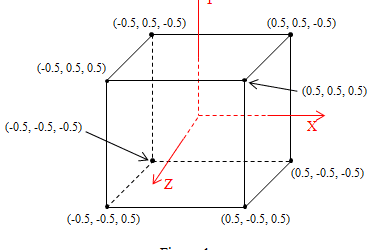


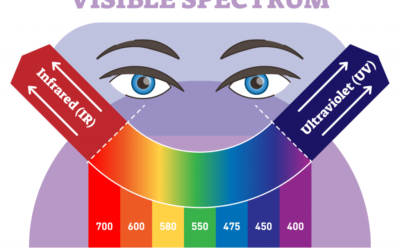




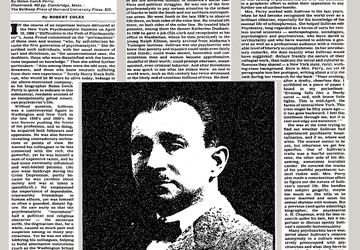


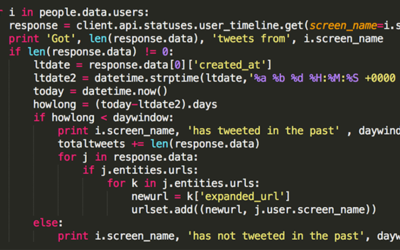




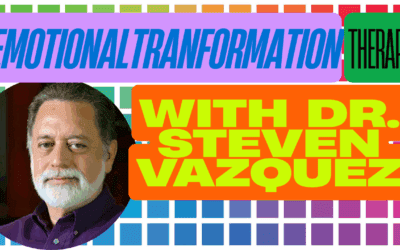

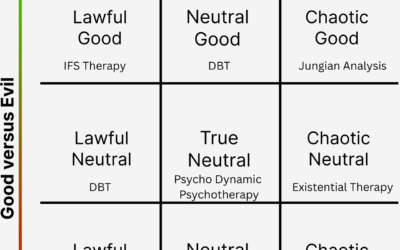
0 Comments